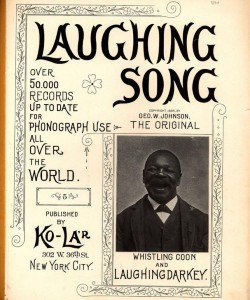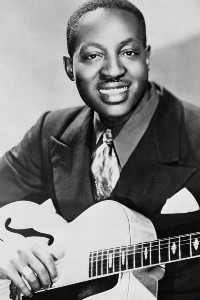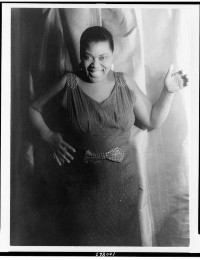A Black History Addendum to the American Music Industry
The African American sociologist W. E. B. Du Bois (1898) addressed scholars during a time when, as the first African American to graduate from Harvard with a Ph.D., his unwavering view on the complexity, intellectual capabilities, and creative capacities of Black people in America was not widespread among the academic community. He states:
This quote clearly brings into view the responsibility we have as scholars to conduct quality research and communicate our findings honestly; this is not for the sake of any race but for the future generations of scholars who will build on our research for the betterment of humanity. Part of my inspiration for this blog came from reading Soul in Seoul: African American Popular Music and K-pop by Crystal Anderson (2020), where she masterfully takes the reader on a journey that culminates in understanding and appreciation for Korean culture while fulfilling her scholarly obligation of accurately documenting the events, social environment, disagreements in the literature, and the role of Black American culture in K-pop. The line that spoke to the core of me as a creative was, “When American culture travels, so does black American culture.” (p. 21). Though this sentence echoes the thematic sentiments of many scholars, her ability to encapsulate a core belief I did not realize I possessed ignited in me a flame of appreciation for all whose creative lineage surges through my every intellectual endeavor, even if most of whose names are lost in the annals of a Jim Crow time. It also brought back to my memory that America’s strength is tied to the greatness of Black people in America. With the limited space of this blog, I will do my best to add the Black perspective to the history of the American music industry.

Let me set the stage, socially, for the beginning – the late 1800s – of the recorded music industry in America. In 1776, we had the American Revolution and our subsequent independence from the British; the early 1800s, where Black Americans fought at all levels for freedom and used artistic expression to show proof of their humanity; then the Civil War (1861-1865) and the culminating amendments to the Constitution, e.g., the 13th Amendment [the abolishment of slavery except for forced labor to those who are punished for a crime] (Living Cities & Pilgrim, 2022). This environment, triangulated with Black people’s established and dynamic oral and musical tradition, and a music industry in its infancy, was hostile to those Black composers who wrote and performed music; they were behind the scenes and paid very little for their work, and most never received credit (Blakemore, 2023). A few exceptions to the lack of credit occurred in 1890 when the first Black recorded musician – George W. Johnson – created a record of whistling ragtime, in the early 1900s with Bert Williams, and then a major turn in 1920 when Perry Bradford convinced Okeh Records to record Mamie Smith, a blues singer. Once consumers discovered that a Black artist had recorded two songs, they bought 75,000 records at the average – and costly — price equivalent to two hours of labor.

Socially, 1916 marked the start of the Great Migration, when many Blacks were leaving the South because of Jim Crow laws, which enforced racial segregation and disenfranchisement after the Civil War (Living Cities & Pilgrim, 2022). An example of this is Big Bill Broonzy, who went from being a sharecropper in Mississippi to being a cook and janitor in Chicago (Blakemore, 2023); in addition, he was a musician who created what was then called “race records,” a genre that laid the foundation for jazz, blues, and gospel, and was eventually renamed rhythm and blues. Like the thousands of other artists and musicians who performed ragtime and played in all-Black orchestras under this genre, he was paid very little, and his name is rarely spoken. This was because recording equipment was expensive and all owned by white Americans who catered exclusively to white audiences, who in turn did not want to know they were listening to Black artists.
As a result, labels realized Black musicians could generate significant income and started to create race records. Besides wanting to sell records, they also knew they could underpay and exploit Black people, having them sign over rights to the song and sound recordings, all while creating fictitious artist names to prevent the original artists and songwriters from financially benefiting from the release of the records (Blakemore, 2023). While Black songwriters were being paid $25 for complete ownership of their songs and recordings, their white counterparts were able to negotiate contracts of up to $100,000 a year with royalties (Fierro & Alexander, 2024).
Today, some have likened the contracts used in the music industry to forms of slavery and servitude. This is due to the songwriter’s job of crystalizing culture in song form, while publishers (those who exploit the song) and record labels (those who exploit the recorded songs) control distribution and most forms of media with their budgets. This shows how corporations control culture, i.e., what is presented, how it is presented, and who represents the culture. Though presented otherwise, musicians and artists do not act autonomously from record labels as social scientists have suggested; they must create commercial records under the supervision of their labels, who set both the goals and objectives. The goal of the record label is to turn the intellectual property (sound recordings) into a product meant to make a profit. This capitalistic procedure fundamentally changes the original cultural intent once it is mass-produced. This is due to record labels looking for artists that fit the pre-established criteria for what they consider an artist to be at that point in time. Hip-hop and rap music have gone through this process of appropriation and commodification to make it more appetizing to the mainstream (Robertson, 2014).
For instance, rapper Too Short describes how his record label forced him to create music that perpetuated a stereotype instead of the conscious type of rap that he desired to create (Kopano, 2014). Further highlighting the lack of artistic control and autonomy by a group in the music industry is how few women produce, write, and perform their own music. This is alarming because most of the music performed by women is written by men. Also, because this is Black History Month, I must say that only two Black women — Lauryn Hill and Autumn Rowe (Alexander, 2024) — have ever won a Grammy for being a producer on an Album of the Year.

And yet, in the early days of the US music industry, Black women had a unique and powerful start. In 1923, Bessie Smith, a Black and bisexual female singer, was the first African American superstar, selling hundreds of thousands of records that were written by two women – Lovie Austin and Alberta Hunter (Mahon, 2019) – though total female control at this level was short-lived.
Ralph Peer helped record some of the first race records – Black and then Mexican – as the artists and repertoire (A&R) of Okeh Records. An A&R is similar to a talent scout, and Peer was responsible for finding artists, selecting music, and successfully recording the music. While in Atlanta, he found Fiddlin’ John Carson and recorded two songs – one about a slave in a log cabin – that he hated so much he decided not to release the music but was convinced by a distributor to send 500 copies. He believed so much that the music would fail that he did not put a serial number on the records, but they sold out in days. This was the start of “hillbilly music” that would eventually turn into country music (Huber, 2008) and the beginning of the genre system that would segregate the music industry. This is interesting to me because Fiddlin’ John Carson was singing the same type of music stylings and lyrical topics as Black musicians but with a white face, meaning even the segregated genre system (race records versus hillbilly music) was made successful because of Black culture in America.
Similarly, as race records were not seen as the art form of mainstream America even as they were influencing the entirety of American music, the same argument can be made about rap. Even though most have assumed that hip-hop is an art form derived from gangs in New York, transcripts from interviews with some of the genre’s earliest creators show that this is a false assumption (Aprahamian, 2019). Instead of describing the genre as the complex expression of culture, with its pleasures, varying community and social dynamics, the unique symbols of individual creative expressions, and the differing socioeconomic perspectives of those in the Black community that it is, social scientists have pigeonholed this Black musical styling as a being a coping mechanism that focuses mainly on consumerism. Simply take a look at Chance the Rapper to see and hear another perspective (Fierro & Alexander, 2024).
To this end, at a low level, such a lack of rich and thorough description and perspective can be seen as academic laziness; at a high level, this can be seen as being dishonest, which is what W. E. B. Du Bois references in the opening quote. Though words written and published by academics may appear harmless, the number of primarily Black male rappers who are imprisoned for lyrics in their songs when no other music genre or artistic expression deals with this shows the potential societal dangers of such academic activity because policymakers use the research of academics to establish laws, with California being the only state to address the issue of rapper incarceration to date (Paul, 2022). As a Grammy-winning composer, an editor and scholar, an African American, a Black man in America, and simply an American, I chose to curate a case study series based on the thought of how I can take the lessons from the past and use them to do my part to create a world that is better for me having been here.
For this reason, I intend to purposefully stand on the scholarship of the scholars before me to curate a space full of as many perspectives, including Black, female, international, non-human (virtual influencers), indigenous, independent musicians, and more. The current case study offerings for this year document the career of Missy Elliott through the lens of feminism and erotic capital (Garcia-Borbón & Alexander, 2024), Grammy-winner Autumn Rowe (Alexander, 2024a), the viral phenomenon of an AI mimicking the voice of Drake and The Weeknd (Alexander, 2024b), Snoop Dogg’s use of NFTs for Death Row Records (Johnson, 2024), Chance the Rapper and his success as an indie artist (Fierro & Alexander, 2024), the business decisions of Kanye West (Harris, 2024), along with topics from non-Black artists, such as Bad Bunny and the rise of Latin music (Garcia-Borbón, 2024a), BTS and Korean soft power (Spink, 2024), the signing and immediate dropping of the first non-human artist – Fn Meka (Alexander & Zhao, 2024), and the multiple impacts of Taylor Swift’s Era’s tour (Garcia-Borbón, 2024b). Next year, voices from indigenous populations, non-American music industry perspectives, neighboring rights, and emerging technologies will be added, along with a few more surprises. I look forward to serving the music industry studies community and hearing your thoughts and ideas on what is needed.
































































































